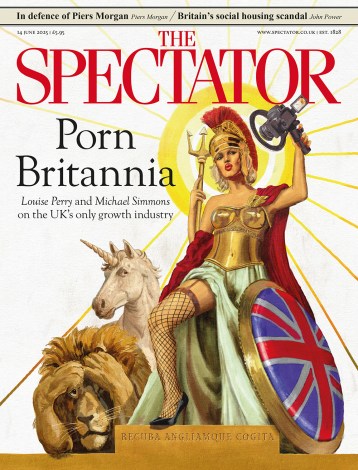
Last weekend, under windswept banners depicting the Sacred Heart of Jesus and the Virgin Mary, nearly 20,000 young pilgrims marched through fields and forests between the cathedrals of Paris and Chartres. All of them carried rosaries and chanted in Latin, sometimes breathlessly: it’s a punishing 60-mile trek through mud and rocks.
Each ‘chapter’ of the column was accompanied by priests. Like the lay pilgrims – drawn from 30 countries but dominated by French teenagers in scouting uniform – they wore backpacks and trainers, but also full-length cassocks or habits. They were traditionalists and so were the young people: despite their informality, they were utterly committed to intricate Latin worship.
Making peace is the first great challenge of his pontificate
From a distance, the banners and fleur-de-lys flags summoned folk memories of St Joan of Arc. When the Maid’s forces approached Orléans in 1429, her English enemies were startled by the hymn ‘Veni Creator Spiritus’ sung by priests emerging from the woods. Was this an army or a religious procession? It’s tempting to ask the same question about the Chartres pilgrimage, an event that grows bigger every year. Though the atmosphere was joyful, this time the gathering was overshadowed by the ‘liturgy wars’ raging most fiercely in the United States and France. Pope Leo XIV, himself an American, must know how desperate the situation is; making peace is the first great challenge of his pontificate.
The casus belli is the old Latin Mass that a growing number of young Catholics are discovering, more than half a century after the Church decided that it was too reactionary for their grandparents’ generation. Celebrated ad orientem (facing east), it follows a rubric of crossings, bows and genuflections that can take years to master. Until recently it was known as the Tridentine Mass, a name derived from the Council of Trent that codified it in 1570. Now its devotees call it the Traditional Latin Mass or ‘TLM’, recognising that most of its prayers and ceremonies long predate the Counter-Reformation.
In other words, it was already centuries old when Joan of Arc attended it. The Traditional Latin Mass is the western counterpart of the ancient eastern liturgies that Pope Leo praised within days of his election, telling Catholics whose rituals developed in Byzantium or the Holy Land that ‘we have great need to recover the sense of mystery that remains alive in your liturgies’. But was that sense of mystery lost or thrown away? In 1970, after the Second Vatican Council, Latin-rite parishes – making up most of the world’s Catholic congregations – were ordered to ditch the TLM in favour of simplified vernacular masses, often badly translated and influenced by Protestant models. Pope John Paul II tried to purify the new mass by curbing the excesses of priests who, grinning like game-show hosts, turned the Holy Sacrifice into a ‘communal meal’ in which the ‘people of God’ worshipped themselves. He was widely ignored.
He also faced the challenge of the Society of St Pius X (SSPX), founded by the ultra-conservative French archbishop Marcel Lefebvre, who broke away from the main Church. John Paul excommunicated Lefebvre after he illicitly ordained bishops. Yet the SSPX flourished, and when the Pope set up a rival body, the Priestly Society of St Peter, whose priests had permission to celebrate only the old mass, that also flourished.
Then came Benedict XVI, who declared that ‘what earlier generations held as sacred, remains sacred’. In 2007 his apostolic letter Summorum Pontificum horrified liberal cardinals. From now on, any priest could say the TLM in parish churches so long as people wanted it – and a small but formidably well-organised Catholic subculture wanted it very much. But in 2013 the conclave elected Francis. In his native Argentina he was a merciless opponent of the TLM – but as Pope he held fire because Benedict was still alive. By 2021, however, Francis’s health was failing. Worried that his predecessor might outlive him, he tore up Summorum Pontificum.
Francis’s Traditionis Custodes banned the TLM from parishes and forbade new priests from learning it. However, many bishops found ways of circumventing the carelessly drafted ruling. They weren’t necessarily fans of the old mass, but they deplored the brutal tactics of the Pope’s enforcer, the Yorkshire-born Cardinal Arthur Roche. ‘It was like watching some monstrous child pulling the wings off flies,’ says one source.
With Leo XIV’s election, traditionalists hoped for reprieve. But it was only a faint hope, because the new Pope – who combines a quiet charisma with a certain frustrating inscrutability – was so fond of quoting their tormentor Francis.
Then the liturgy wars went nuclear. Bishop Michael Martin of Charlotte, North Carolina – a Birkenstock-wearing Franciscan with a Trumpian ego – announced that from 8 July the old mass would be banned from the four parishes where it was celebrated. Ignoring protests from their pastors, he designated an out-of-town chapel as the location of just one TLM on Sundays.
Other bishops had taken similar actions, but what disgusted traditionalists was Martin’s tone, dripping with contempt for anyone who preferred the ancient rite. Someone then leaked a memo in which the bishop planned a dumbing-down of the new mass, removing all traces of Latin, ripping out altar rails, banning kneeling for communion and even forbidding women readers from wearing head coverings.
This scorched-earth policy caused such outrage from priests that he withdrew the memo. Too late: overnight Martin became the most reviled bishop in the United States, and not just in Latin Mass circles. Catholic YouTube channels went into overdrive. Was Martin implementing Leo XIV’s secret agenda, or was he trying to force the Pope’s hand?
Last week, though, something odd happened. Martin announced that he was pausing the TLM restrictions until October, something he’d previously ruled out. He did so immediately after a meeting between Pope Leo and Cardinal Roche, who is expected to retire soon as the Vatican’s head of liturgy. Also, Martin said that if the Vatican changed the rules restricting the TLM, the Diocese of Charlotte ‘would abide by those instructions’. What did that mean? Everyone is sick of the confusion.
‘It was like watching some monstrous child pulling the wings off flies’
Things are no better in France. On Monday there was a glorious Solemn Mass in Chartres Cathedral – but it nearly didn’t happen. Some French bishops wanted to slam the doors in the face of the pilgrims for wanting the wrong sort of ‘youth mass’.
A moment in the ceremony explains why boomer Catholics are so alarmed. The dozens of priests genuflecting before the altar, birettas in hand, were only a few years older than the worshippers. Something similar is happening in some of London’s Anglican churches, where Generation Z are flocking to old-fashioned evensong. The difference is that the Church of England long ago stopped harassing anyone attached to the Book of Common Prayer, agreeing with Pope Benedict that what earlier generations held as sacred remains sacred.
Progressive cardinals and bishops, by contrast, freak out at the sight of a maniple, a strip of silk worn over the arm of a priest celebrating the old mass. To be fair, they have always hated this sort of vestment; but Pope Francis and Cardinal Roche encouraged them to channel their dislike into the sort of petty-minded persecution that English Catholics endured under the penal laws.
Pope Leo cannot allow the liturgy wars to drag on. He may choose to dismantle Traditionis Custodes gently, employing loopholes rather than trashing his predecessor. That’s fine. But dismantle it he must.
Contrary to some reports, it’s not true that significant numbers of young people in the West are turning to Catholicism. But among those few young Catholics who practise their faith, a rising proportion are drawn to the ‘Mass of the ages’, as it’s sometimes called. If Pope Leo wants their loyalty, enabling him to pass on the spiritual gifts of tradition to his successors, then he must learn one lesson now, in the first months of his pontificate: he cannot square the circle of singing plainchant from his balcony while suppressing the supreme expression of Latin worship.








Comments